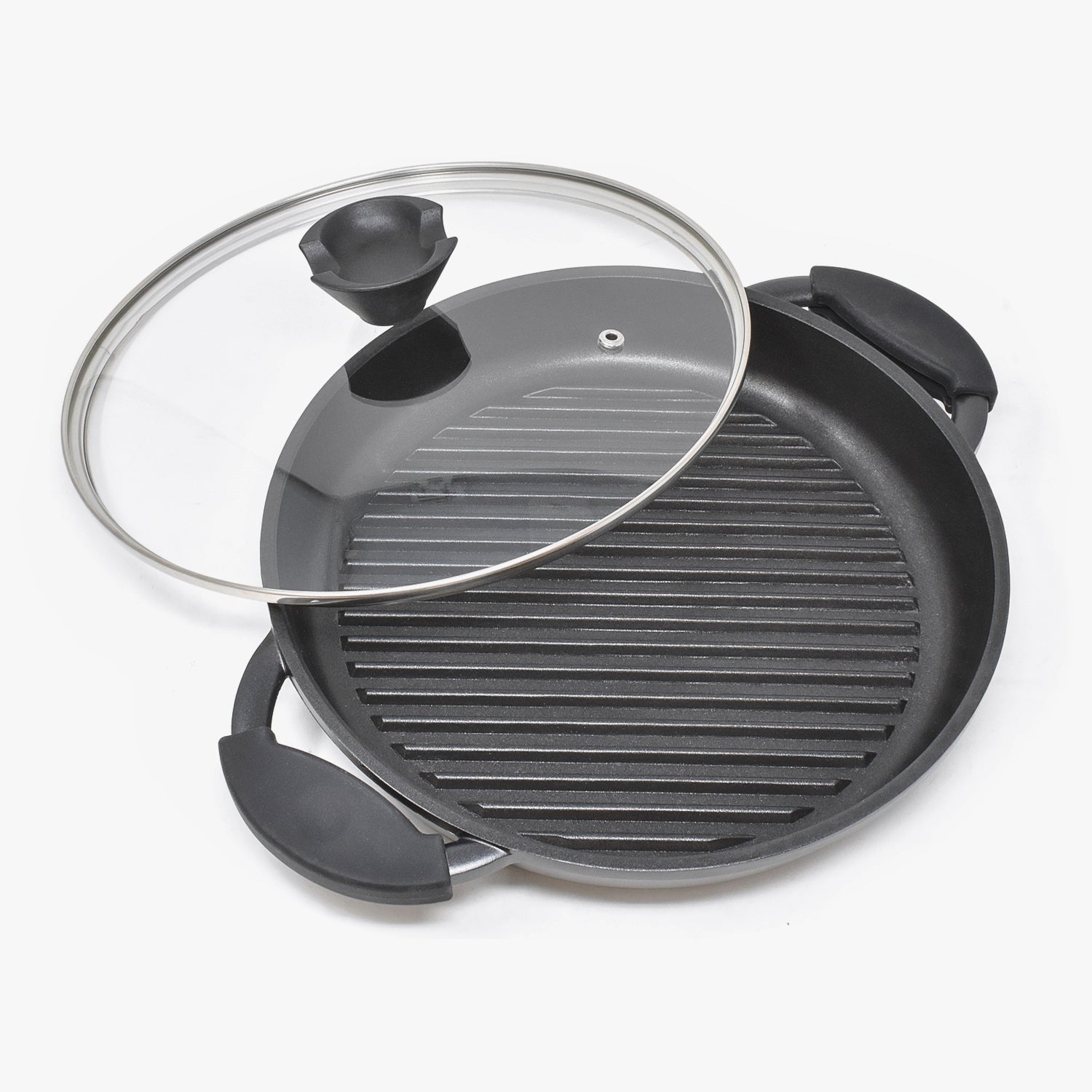The humble grill pan. A cast-iron workhorse, a backyard barbecue’s indoor counterpart. It’s a tool that’s been around for ages, but has recently seen a resurgence in popularity, particularly in its more casual, round iteration.
Why a Round Grill Pan?

You might wonder, “Why a round grill pan when rectangular ones are so common?” Well, let’s dive into the delightful quirks of this circular wonder.
Versatility, Thy Name is Grill Pan: While rectangular grill pans are great for steaks and chops, round ones offer a wider range of possibilities. From paninis to pizzas, from stir-fries to seared scallops, a round grill pan can handle it all.
Cooking with a Round Grill Pan: A Joyful Experience
Using a round grill pan is more than just cooking; it’s an experience. The sizzle of food on the hot surface, the enticing aroma that fills the air – it’s a sensory delight.
Here are a few tips to elevate your round grill pan experience:
Seasoning is Key: A well-seasoned grill pan is a non-stick dream. Seasoning involves building up layers of oil on the pan’s surface, creating a natural, protective coating.
Beyond the Grill:
While the grill pan is primarily associated with grilling, its versatility extends beyond. You can use it for:
Sautéing: Quickly cook vegetables or meat in a small amount of oil.
So, whether you’re a seasoned home cook or a culinary novice, a round grill pan is a valuable addition to your kitchen arsenal. Its versatility, efficiency, and stylish design make it a must-have for anyone who loves to cook.
A Timeless Kitchen Companion
The cast iron skillet, a culinary workhorse that has stood the test of time. Its rugged, heavy-duty construction and exceptional heat retention make it a versatile tool for a wide range of cooking tasks. From searing steaks to baking cornbread, this pan can handle it all.
Why Cast Iron?
Durability: Cast iron skillets are built to last. With proper care, they can be passed down through generations.
Cooking with a Cast Iron Skillet
Searing:
Baking:
Braising:
Tips for Using a Cast Iron Skillet
Seasoning: Seasoning your cast iron skillet creates a natural nonstick coating.
A Culinary Adventure
The cast iron skillet is more than just a cooking tool; it’s an invitation to culinary adventure. With its versatility and durability, it can help you create a wide range of delicious dishes. So, grab your cast iron skillet and let your imagination run wild!
Additional Ideas for Using a Cast Iron Skillet:
Frying Eggs: Perfect for crispy edges and a runny yolk.
Whether you’re a seasoned home cook or just starting out, a cast iron skillet is a valuable addition to your kitchen.